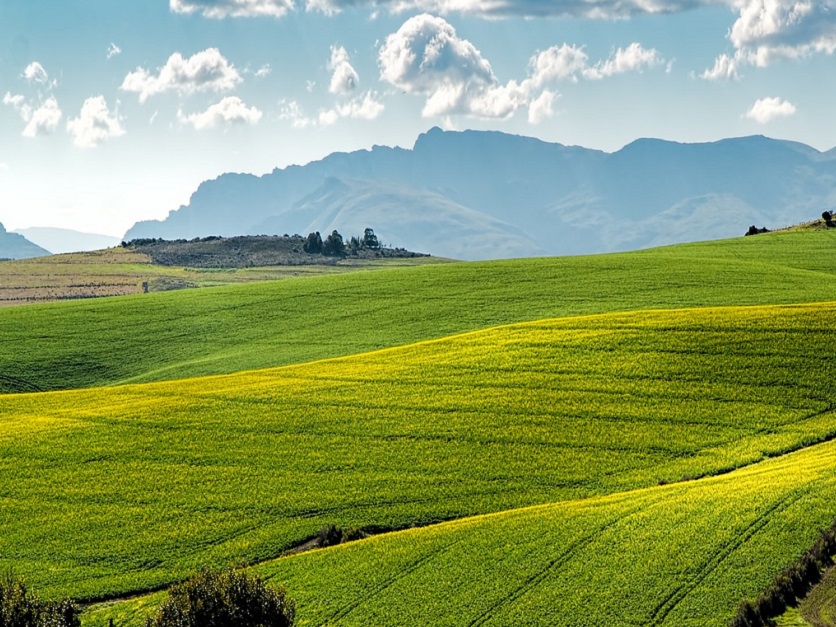A new report from American Farmland Trust projects if the current trend of farmland conversion continues, the United States will lose an area nearly the size of South Carolina in the not-too-distant future.
AFT's new “Farms Under Threat 2040: Choosing an Abundant Future” says smart, compact growth is the key to arresting the loss of prime ag land. Citing an earlier report, AFT said between 2001 and 2016, the nation lost 2,000 acres of farmland per day, a total of about 11 million acres. At that rate, between 2016 and 2040 the U.S. would lose 18.4 million acres — nearly as large an area as the aforementioned Palmetto State.
“Of this total, 6.2 million acres will be converted to urban and highly developed land uses such as commercial buildings, industrial sites, and moderate to-high-density residential development,” the report says. “The remainder, 12.2 million acres, will be converted to low-density residential areas, which range from large-lot subdivisions to rural areas with a proliferation of scattered houses.”
“We can’t keep developing open fields just because it’s easy or convenient,” AFT President and CEO John Piotti said on a webinar hosted by Agri-Pulse Wednesday. “Once a farm is chopped up or paved over, it is gone forever.”
Another danger is “rural sprawl,” driven by increased housing prices in metro areas and the trend toward remote work. “If this happens, 24.4 million acres of farmland and ranchland could be paved over, fragmented, or compromised by 2040,” the report said.
“But if policymakers and land-use planners across the country embrace more compact development, it would slash conversion and keep up to 13.5 million acres of irreplaceable farmland and ranchland from being turned into big-box stores, sprawling subdivisions, and large-lot rural residences,” the report says.
AFT’s policy recommendations, which are tailored in the report to local, state and federal agencies, are to “embrace smart-growth principles to improve land-use planning; permanently protect agricultural land to secure a supply of land in perpetuity; advance smart solar to boost both renewable energy and farm viability, and support farmland access to create opportunities for a new generation of farmers, particularly historically marginalized producers.”
The report says “smart-growth principles favor locating new development in cities and older suburbs rather than fringe areas; supporting public transit and pedestrian-friendly development; encouraging mixed-use development; and preserving farmland, open space, and environmental resources.”
“Where possible, we should be putting solar on rooftops, over parking lots, and on brownfields and marginal land,” Piotti said. “And when solar does go on good farmland, we should be encouraging agrivoltaics (or dual use solar), promoting soil health measures under the arrays, and requiring strong decommissioning standards.”
The report sketches out three scenarios for the near future: Business as Usual, Runaway Sprawl, and Better Built Cities.
Under the first, 18.4 million acres of farmland is converted to more-developed uses between 2016 and 2040. “Six states will convert over 10% of their agricultural land in this scenario, and more than 20 counties will convert over 40% percent of their remaining farmland,” the report says. “Perhaps most concerning, nearly half of the conversion will occur on the nation’s most productive, versatile, and resilient farmland and ranchland, or nationally significant land.”
Looking for the best, most comprehensive and balanced news source in agriculture? Our Agri-Pulse editors don't miss a beat! Sign up for a free month-long subscription.
Under the “sprawl” scenario, “over 1 million acres of agricultural land will be lost or compromised every year, amounting to 24.4 million acres between 2016 and 2040. In this scenario, over 12 million acres of nationally significant land will be converted — a devastating blow to the nation’s best land.”
Under the final scenario, “agricultural land conversion could be cut by 7.5 million acres compared to Business as Usual .… At the same time, conversion of nationally significant land would decrease by 42%, taking the pressure off 3.7 million acres of our best land for growing healthy food.”
Highlighting two issues much in the news lately, the report discussed both the impact of the war in Ukraine and the continuing issue of water scarcity.
“In a world already battered by COVID-19 and climate change, Russia’s invasion of Ukraine is severely disrupting food, energy, and financial markets,” the report says. “Russia and Ukraine together provide around 30% of the world’s wheat and barley, one-fifth of its corn, and over half of its sunflower oil. The war will further erode food security for hundreds of millions of people around the globe unless other countries can fill the gap.”
AFT notes that even though only 14% of U.S. croplands are irrigated, “they account for more than 54% of the total value of U.S. crop sales, including over 70% of vegetables and 80% of fruits and nuts.”
With water shortages throughout the Western U.S. “farmers and cities will need to work together to find collaborative solutions,” the report says. “Bringing farmers, researchers, and local constituents to the table during water scarcity planning can lead to better outcomes.”
Also on the webinar, Natural Resources Conservation Service Chief Terry Cosby wondered why land that has previously been developed cannot be "repurposed," instead of prime farmland being developed, and lamented the loss of ag land near Columbus, Ohio, where he lives, to large warehouses.
“It’s hard to see it happening," he said.
Also appearing on the webinar were Katharine Burgess, vice president of land use and development at Smart Growth America, and former ambassador to the UN's Food and Agriculture Organization, Kip Tom of Tom Farms in Indiana.
The webinar is available for viewing here.
For more news, go to www.Agri-Pulse.com


![Steve headshot 250x200[1]](http://www.agri-pulse.com/ext/resources/Headshots/Staff-Photos/thumb/Steve_Headshot_250x200[1].JPG?1738947158)